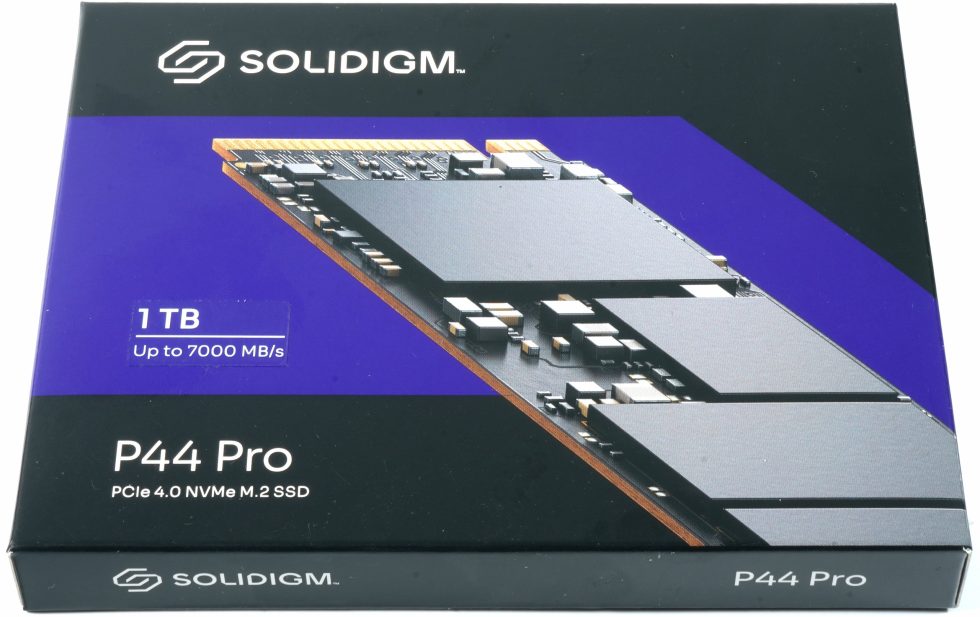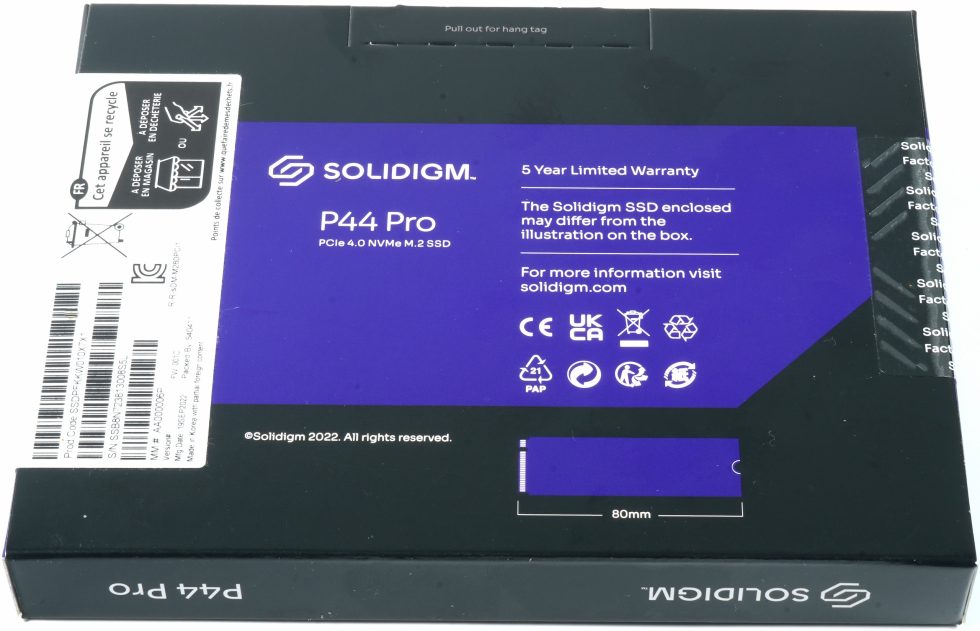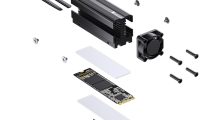I deliberately took a bit more time this time by testing the Solidigm P44 Pro briefly at first and then using it in the workstation for a longer time. The Solidigm P44 Pro is ultimately just a SK hynix Platinum P41 under a different name and with modified firmware. The tested 1 TB version is one of three P44 models that are available with 512 GB, 1 TB and 2 TB storage expansion. However, there is no option for 4 TB. In return, it has a bit less overprovisioning compared to the P41 Platinum. However, you can certainly live with this in practice.
The SSD comes to the customer in the M.2 2280 form factor with PCIe 4.0 x4 as the interface and transfers data at up to 7,000 MB/s for reading and 6,500 MB/s for writing. The specifications are quite realistic and are also achieved in synthetic benchmarks at the beginning. And today, after almost 3 months of workstation use? I can already spoil that the data rates remain constant later on after an initial “shrinkage” when copying large amounts of data – a plus I will talk about later. Solidigm uses a “dynamic pSLC cache” in the P44, just like almost all other manufacturers, which I would like and have to say a few words about in the course of the article (as always) for a better understanding. And yes, this SSD again uses its own DRAM as cache, which is especially noticeable when streaming video. But more on that in a moment.
Unboxing, accessories and assembly
The manufacturer packs the naked SSD without a cooling block, just like other providers, which is quite a sustainable idea in times of motherboards with integrated M.2 coolers. But you should definitely cool them, which I did with the motherboard’s normal M.2 slot cooler. Completely without is rather pointless, especially for continuous loads. And because you don’t supply a cooler, you also do without the obligatory small screw. This again would have certainly made sense for upgraders with their own cooler.
The SSD has a blank back on the PCB, which comes from SK hynix NAND Product Solutions Corp, DBA Solidigm and is thus a true proprietary product. Many others use TECHVEST on Taiwan as a PCB maker. The rest on the back is rather unspectacular and it almost looks like a billboard for logos. Even if it itches in the fingers to remove this sticker for better cooling – the loss of warranty is then also included. Here, the manufacturers should please be a little more creative. Or the user who uses a heat gun to remove it and simply saves the sticker just in case.
For a better overview, I now have the data sheet of the tested variant for you before I uncover the SSD on the following page and analyze the technology including the dynamic pSLC:
| Controller: | SK hynix Aries ACNS075 |
| DRAM cache: | SK hynix LPDDR4 |
| Storage capacity: | 500 / 1,000 / 2,000 GB |
| Memory chips: | SK hynix 176 Layer TLC |
| Form factor: | M.2 2280 |
| Interface: | PCIe 4.0 x4 |
| seq. Read: | 7,000 MB/s |
| seq. Writing: |
6,500 MB/s
|
| 4K Random Read: | 1,400,000 IOPS |
| 4K Random Write: | 1,300,000 IOPS |
| Functions: | NVMe, NCQ, TRIM, SMART, Garbage Collection |
| Encryption: | AES-256 |
| Total Bytes Written (TBW): |
750 TBW
|
| Warranty: | 5 years |
| Price: | 119 euros |
| Price per GB: | 11.9 cents |




































9 Antworten
Kommentar
Lade neue Kommentare
Mitglied
Veteran
Urgestein
1
Mitglied
1
Neuling
Mitglied
Veteran
Alle Kommentare lesen unter igor´sLAB Community →